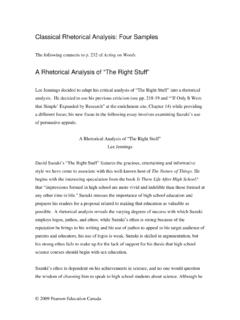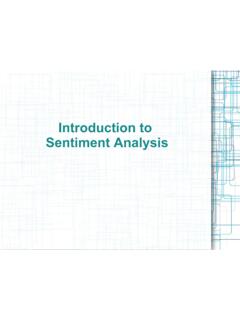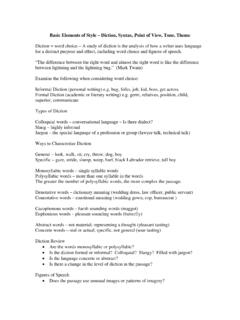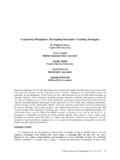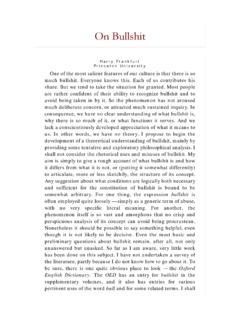Transcription of Rightwing Extremism: Current Economic and Political ...
1 IA-0257-09 UNCLASSIFIED//FOR OFFICIAL USE ONLYUNCLASSIFIED//FOR OFFICIAL USE ONLY(U//FOUO) Rightwing Extremism: Current Economic and Political Climate Fueling Resurgence in Radicalization and RecruitmentUNCLASSIFIED//FOR OFFICIAL USE ONLY UNCLASSIFIED//FOR OFFICIAL USE ONLY (U) LAW ENFORCEMENT INFORMATION NOTICE: This product contains Law Enforcement Sensitive (LES) information. No portion of the LES information should be released to the media, the general public, or over non-secure Internet servers. Release of this information could adversely affect or jeopardize investigative activities. (U) Warning: This document is UNCLASSIFIED//FOR OFFICIAL USE ONLY (U//FOUO). It contains information that may be exempt from public release under the Freedom of Information Act (5 552). It is to be controlled, stored, handled, transmitted, distributed, and disposed of in accordance with DHS policy relating to FOUO information and is not to be released to the public, the media, or other personnel who do not have a valid need-to-know without prior approval of an authorized DHS official.
2 State and local homeland security officials may share this document with authorized security personnel without further approval from DHS. (U) All person information has been minimized. Should you require the minimized person information, please contact the DHS/I&A Production Branch at or (U//FOUO) Rightwing Extremism: Current Economic and Political Climate Fueling Resurgence in Radicalization and Recruitment 7 April 2009 (U) Prepared by the Extremism and Radicalization Branch, Homeland Environment Threat analysis Division. Coordinated with the FBI. (U) Scope (U//FOUO) This product is one of a series of intelligence assessments published by the Extremism and Radicalization Branch to facilitate a greater understanding of the phenomenon of violent radicalization in the United States. The information is provided to federal, state, local, and tribal counterterrorism and law enforcement officials so they may effectively deter, prevent, preempt, or respond to terrorist attacks against the United States.
3 Federal efforts to influence domestic public opinion must be conducted in an overt and transparent manner, clearly identifying United States Government sponsorship. UNCLASSIFIED//FOR OFFICIAL USE ONLY UNCLASSIFIED//FOR OFFICIAL USE ONLY Page 2 of 9 (U) Key Findings (U//LES) The DHS/Office of Intelligence and analysis (I&A) has no specific information that domestic Rightwing * terrorists are currently planning acts of violence, but Rightwing extremists may be gaining new recruits by playing on their fears about several emergent issues. The Economic downturn and the election of the first African American president present unique drivers for Rightwing radicalization and recruitment. (U//LES) Threats from white supremacist and violent antigovernment groups during 2009 have been largely rhetorical and have not indicated plans to carry out violent acts. Nevertheless, the consequences of a prolonged Economic downturn including real estate foreclosures, unemployment, and an inability to obtain credit could create a fertile recruiting environment for Rightwing extremists and even result in confrontations between such groups and government authorities similar to those in the past.
4 (U//LES) Rightwing extremists have capitalized on the election of the first African American president, and are focusing their efforts to recruit new members, mobilize existing supporters, and broaden their scope and appeal through propaganda, but they have not yet turned to attack planning. (U//FOUO) The Current Economic and Political climate has some similarities to the 1990s when Rightwing extremism experienced a resurgence fueled largely by an Economic recession, criticism about the outsourcing of jobs, and the perceived threat to power and sovereignty by other foreign powers. (U//FOUO) During the 1990s, these issues contributed to the growth in the number of domestic Rightwing terrorist and extremist groups and an increase in violent acts targeting government facilities, law enforcement officers, banks, and infrastructure sectors. (U//FOUO) Growth of these groups subsided in reaction to increased government scrutiny as a result of the 1995 Oklahoma City bombing and disrupted plots, improvements in the economy, and the continued standing as the preeminent world power.
5 (U//FOUO) The possible passage of new restrictions on firearms and the return of military veterans facing significant challenges reintegrating into their communities could lead to the potential emergence of terrorist groups or lone wolf extremists capable of carrying out violent attacks. * (U) Rightwing extremism in the United States can be broadly divided into those groups, movements, and adherents that are primarily hate-oriented (based on hatred of particular religious, racial or ethnic groups), and those that are mainly antigovernment, rejecting federal authority in favor of state or local authority, or rejecting government authority entirely. It may include groups and individuals that are dedicated to a single issue, such as opposition to abortion or immigration. UNCLASSIFIED//FOR OFFICIAL USE ONLY UNCLASSIFIED//FOR OFFICIAL USE ONLY Page 3 of 9 (U//FOUO) Proposed imposition of firearms restrictions and weapons bans likely would attract new members into the ranks of Rightwing extremist groups, as well as potentially spur some of them to begin planning and training for violence against the government.
6 The high volume of purchases and stockpiling of weapons and ammunition by Rightwing extremists in anticipation of restrictions and bans in some parts of the country continue to be a primary concern to law enforcement. (U//FOUO) Returning veterans possess combat skills and experience that are attractive to Rightwing extremists. DHS/I&A is concerned that Rightwing extremists will attempt to recruit and radicalize returning veterans in order to boost their violent capabilities. (U) Current Economic and Political Climate (U//FOUO) DHS/I&A assesses that a number of Economic and Political factors are driving a resurgence in Rightwing extremist recruitment and radicalization activity. Despite similarities to the climate of the 1990s, the threat posed by lone wolves and small terrorist cells is more pronounced than in past years. In addition, the historical election of an African American president and the prospect of policy changes are proving to be a driving force for Rightwing extremist recruitment and radicalization.
7 (U) A recent example of the potential violence associated with a rise in Rightwing extremism may be found in the shooting deaths of three police officers in Pittsburgh, Pennsylvania, on 4 April 2009. The alleged gunman s reaction reportedly was influenced by his racist ideology and belief in antigovernment conspiracy theories related to gun confiscations, citizen detention camps, and a Jewish-controlled one world government. (U) Exploiting Economic Downturn (U//FOUO) Rightwing extremist chatter on the Internet continues to focus on the economy, the perceived loss of jobs in the manufacturing and construction sectors, and home foreclosures. Anti-Semitic extremists attribute these losses to a deliberate conspiracy conducted by a cabal of Jewish financial elites. These accusatory tactics are employed to draw new recruits into Rightwing extremist groups and further radicalize those already subscribing to extremist beliefs.
8 DHS/I&A assesses this trend is likely to accelerate if the economy is perceived to worsen. (U) Historical Presidential Election (U//LES) Rightwing extremists are harnessing this historical election as a recruitment tool. Many Rightwing extremists are antagonistic toward the new presidential administration and its perceived stance on a range of issues, including immigration and citizenship, the expansion of social programs to minorities, and restrictions on firearms UNCLASSIFIED//FOR OFFICIAL USE ONLY UNCLASSIFIED//FOR OFFICIAL USE ONLY Page 4 of 9 (U//FOUO) Perceptions on Poverty and Radicalization (U//FOUO) Scholars and experts disagree over poverty s role in motivating violent radicalization or terrorist activity. High unemployment, however, has the potential to lead to alienation, thus increasing an individual s susceptibility to extremist ideas. According to a 2007 study from the German Institute for Economic Research, there appears to be a strong association between a parent s unemployment status and the formation of Rightwing extremist beliefs in their children specifically xenophobia and antidemocratic ideals.
9 Ownership and use. Rightwing extremists are increasingly galvanized by these concerns and leverage them as drivers for recruitment. From the 2008 election timeframe to the present, Rightwing extremists have capitalized on related racial and Political prejudices in expanded propaganda campaigns, thereby reaching out to a wider audience of potential sympathizers. (U//LES) Most statements by Rightwing extremists have been rhetorical, expressing concerns about the election of the first African American president, but stopping short of calls for violent action. In two instances in the run-up to the election, extremists appeared to be in the early planning stages of some threatening activity targeting the Democratic nominee, but law enforcement interceded. (U) Revisiting the 1990s (U//FOUO) Paralleling the Current national climate, Rightwing extremists during the 1990s exploited a variety of social issues and Political themes to increase group visibility and recruit new members.
10 Prominent among these themes were the militia movement s opposition to gun control efforts, criticism of free trade agreements (particularly those with Mexico), and highlighting perceived government infringement on civil liberties as well as white supremacists longstanding exploitation of social issues such as abortion, inter-racial crimes, and same-sex marriage. During the 1990s, these issues contributed to the growth in the number of domestic Rightwing terrorist and extremist groups and an increase in violent acts targeting government facilities, law enforcement officers, banks, and infrastructure sectors. (U) Economic Hardship and Extremism (U//FOUO) Historically, domestic Rightwing extremists have feared, predicted, and anticipated a cataclysmic Economic collapse in the United States. Prominent antigovernment conspiracy theorists have incorporated aspects of an impending Economic collapse to intensify fear and paranoia among like-minded individuals and to attract recruits during times of Economic uncertainty.










